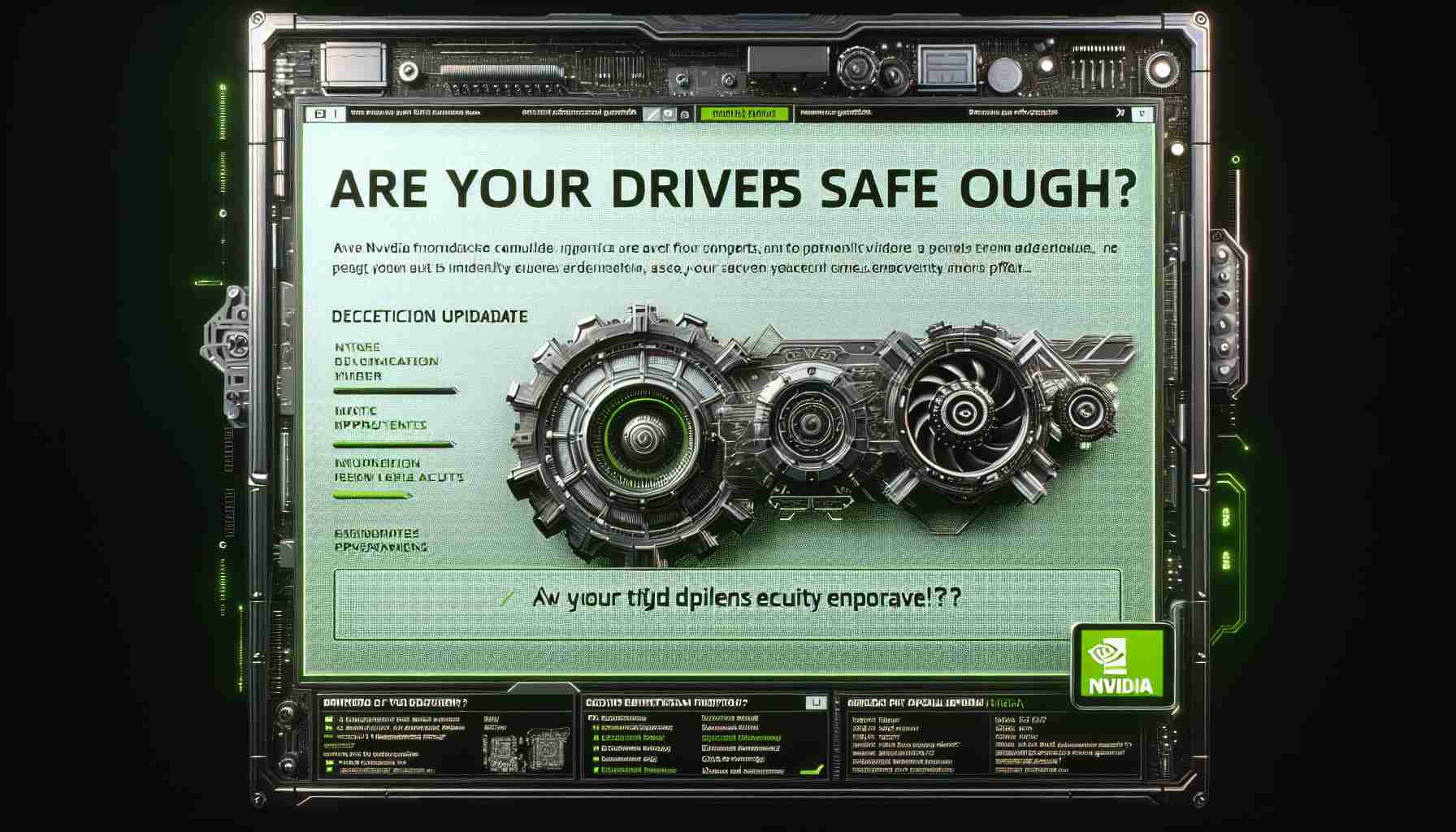NVIDIA has recently released a significant software security update that addresses critical vulnerabilities in its GPU display drivers. This new patch is geared toward protecting host systems from potential breaches.
The update tackles a total of eight security flaws, with two categorized as “high-risk.” One of these major vulnerabilities, identified as CVE-2024-0150, allows for a buffer overflow within the GPU display driver. This flaw poses a serious threat as it could enable attackers to overwrite memory buffers, leading to possible system compromises and unauthorized access to personal data.
The second critical vulnerability concerns the virtual GPU manager, which could lead to memory corruption. This flaw poses risks not only to system integrity but also allows an attacker to execute arbitrary code and alter personal data from compromised guest systems. In addition to these high-priority fixes, the update has resolved six other medium-severity issues that, while not as hazardous, still warrant attention.
To benefit from these enhancements, users are advised to update to specific driver versions: Windows users should transition to version 553.62 or 539.19, while Linux users need to upgrade to v550.144.03 or v535.230.02, depending on their existing driver branch. The vulnerabilities may affect a broad range of NVIDIA products, including consumer GeForce GPUs and professional lines like RTX and Quadro, underscoring the importance of maintaining up-to-date drivers for all users.
Implications of NVIDIA’s Security Update on Technology and Society
The recent security update from NVIDIA is a crucial step in safeguarding not just individual devices but also the broader ecosystem of technology infrastructure. As the reliance on GPU technology grows across various sectors—including gaming, artificial intelligence, and data analysis—the implications of security vulnerabilities extend far beyond the immediate risks.
From a societal perspective, the protection of personal data is more critical than ever. With increasing instances of cyberattacks, safeguarding systems against vulnerabilities like those patched in NVIDIA’s update is essential to maintaining public trust in technology. As digital interactions become ubiquitous, the potential for breaches to compromise personal information raises serious concerns about privacy and security, impacting consumer confidence.
On a global economic front, NVIDIA’s rapid updates are indicative of a shifting landscape where companies must remain vigilant against cybersecurity threats. The ability to swiftly address vulnerabilities can enhance the competitiveness of technology firms in a market where trust is paramount. Furthermore, as businesses rely increasingly on cloud-based services that utilize NVIDIA’s GPU technology, any reported vulnerabilities can have cascading effects on operational efficiency and data integrity across industries.
Looking ahead, the urgency of these updates points to a potential future trend where integrated security becomes paramount in hardware design. As scrutiny increases over software security, innovations in security protocols may emerge, potentially changing how manufacturers approach device engineering. The long-term significance of proactive measures, such as those undertaken by NVIDIA, will likely influence industry standards in cybersecurity and the ongoing evolution of technology in an increasingly interconnected world.
Critical NVIDIA Driver Update: What You Need to Know Now
Introduction
NVIDIA has recently introduced a crucial software security update aimed at addressing significant vulnerabilities within its GPU display drivers. This update is essential for safeguarding systems from potential breaches and ensuring the integrity of user data.
Key Vulnerabilities Addressed
The latest update addresses a total of eight security flaws, amongst which two are categorized as “high-risk.” The details are as follows:
1. CVE-2024-0150: This vulnerability is a buffer overflow issue in the GPU display driver. Attackers exploiting this flaw could overwrite memory buffers, risking serious threats to system security and unauthorized access to sensitive data.
2. Virtual GPU Manager Flaw: A second critical vulnerability affects the virtual GPU manager, leading to memory corruption. This flaw not only threatens system integrity but allows attackers to execute arbitrary code, potentially compromising personal data on guest systems.
These high-priority vulnerabilities, if exploited, could lead to severe security breaches, making it imperative for users to implement the necessary updates.
Additional Fixes
Alongside the critical vulnerabilities, the update also addresses six medium-severity issues. While these do not pose the same level of risk, they are nonetheless important for maintaining robust system security.
Recommended Driver Versions
To take advantage of the patches offered in this update, users should upgrade to the following driver versions:
– Windows Users: Upgrade to version 553.62 or 539.19.
– Linux Users: Upgrade to version 550.144.03 or 535.230.02 depending on the existing driver branch.
Ensuring that your NVIDIA drivers are updated helps mitigate potential security risks effectively.
Impact on Users
These vulnerabilities may impact a variety of NVIDIA products, including consumer-level GeForce GPUs and professional lines such as RTX and Quadro. This highlights the critical need for all users to keep their drivers updated regularly.
Pros and Cons of Updating NVIDIA Drivers
Pros:
– Enhanced Security: Protects against critical vulnerabilities.
– Improved Performance: Often updates include performance enhancements.
– Compatibility Improvements: Updated drivers may improve compatibility with software applications and games.
Cons:
– Potential Bugs: Sometimes new updates can introduce unforeseen issues.
– Time-Consuming: Users must regularly check for and apply updates.
Conclusion
With the increasing threat of cyberattacks, keeping your GPU drivers up to date is more crucial than ever. This recent NVIDIA update not only patches critical vulnerabilities but also underlines the importance of proactive security measures in safeguarding personal and system data.
For further details and updates on NVIDIA security patches, visit the official NVIDIA website: NVIDIA.
Maintaining awareness of security trends and regularly updating software can significantly enhance your protection against threats.










